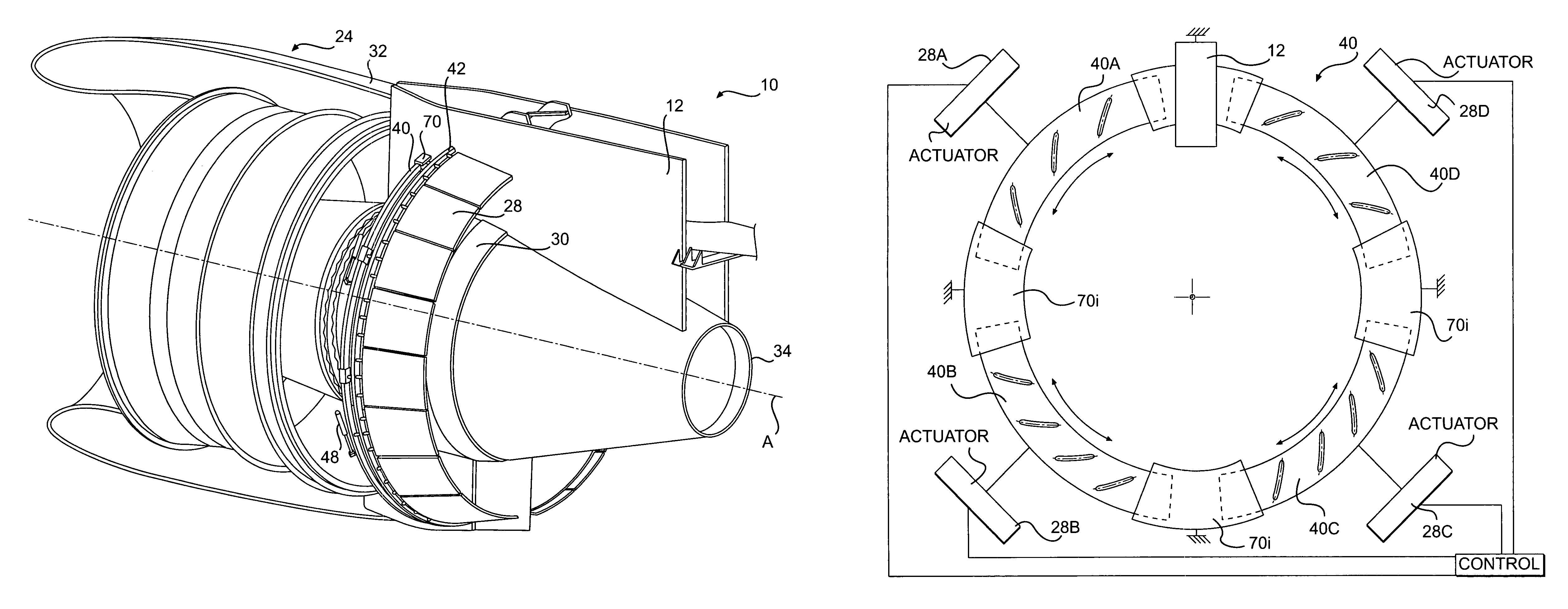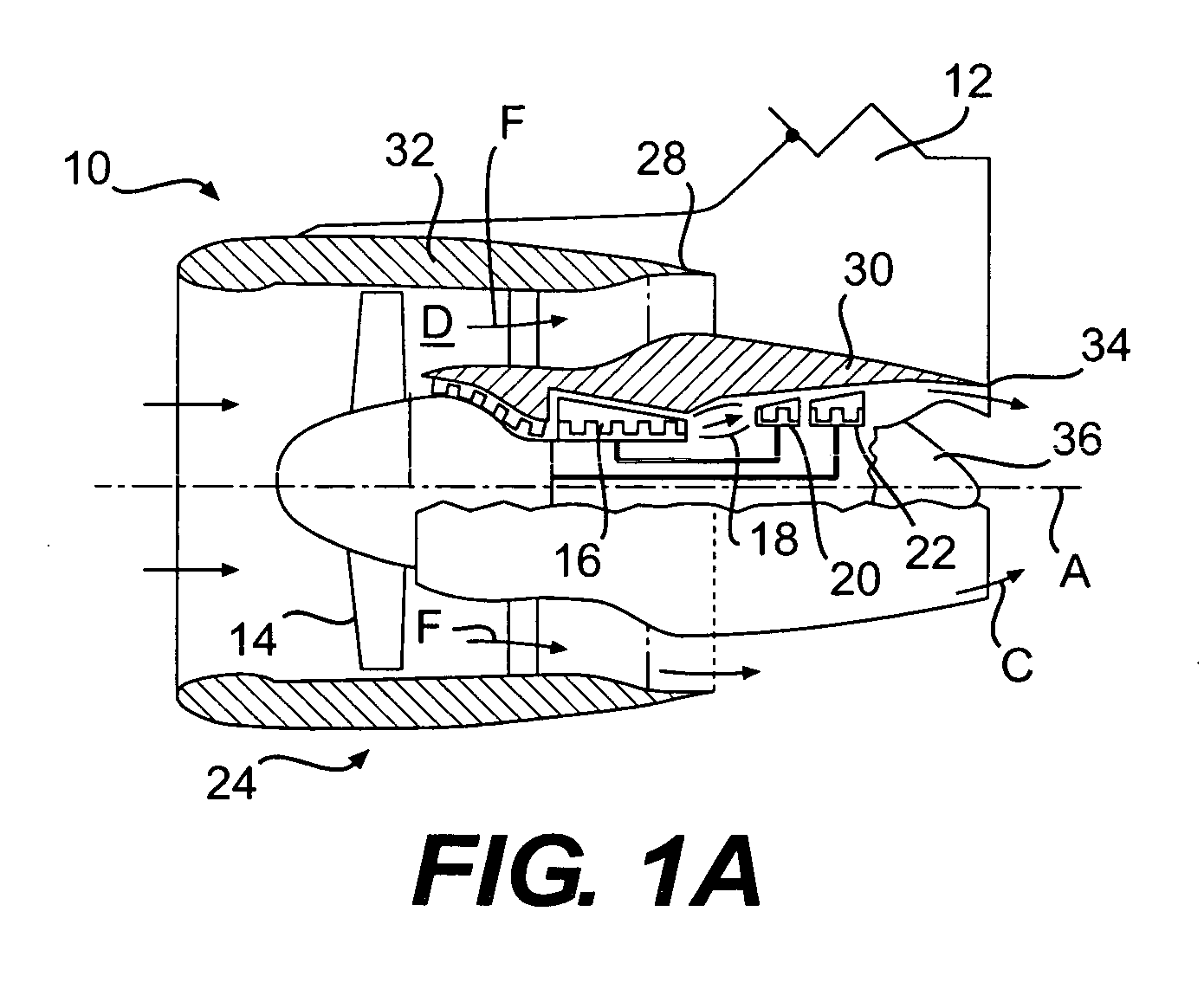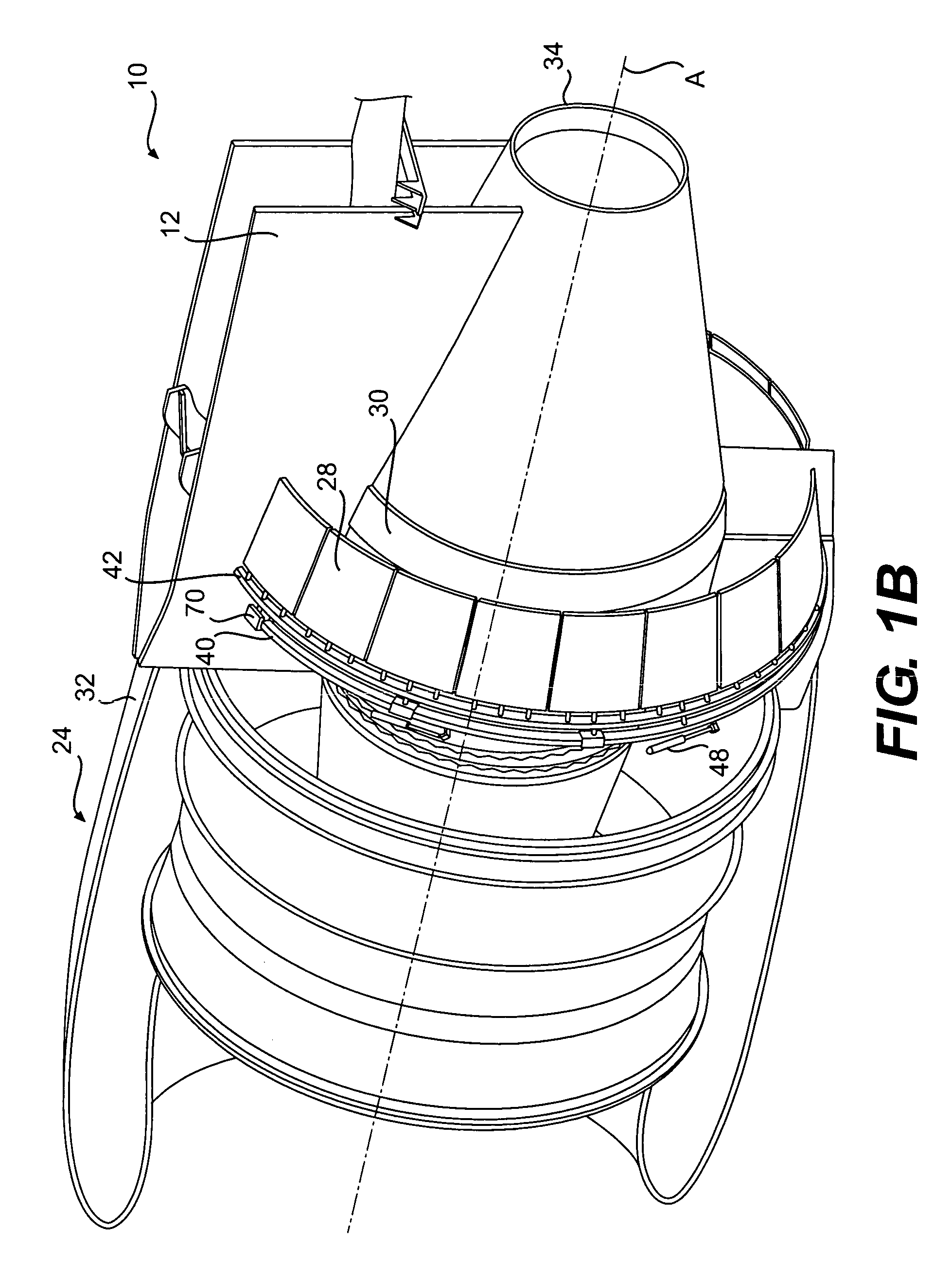Thrust vectorable fan variable area nozzle for a gas turbine engine fan nacelle
a gas turbine engine and variable area nozzle technology, which is applied in the direction of engine control, machine/engine, and spraying apparatus, etc., can solve the problems of high cost, increased complexity, and increased weight of variable area nozzle structures, so as to maximize engine thrust and fuel economy, and achieve relatively inexpensive variable area nozzles. , the effect of effective and efficien
- Summary
- Abstract
- Description
- Claims
- Application Information
AI Technical Summary
Benefits of technology
Problems solved by technology
Method used
Image
Examples
Embodiment Construction
[0025]FIG. 1A illustrates a general partial fragmentary view of a gas turbofan engine 10 suspended from an engine pylon 12 as typical of an aircraft designed for subsonic operation. The engine 10 is preferably a high-bypass turbofan aircraft engine. The engine 10 typically includes in serial flow communication a fan 14 with a low pressure compressor, a high pressure compressor 16, an annular combustor 18, high pressure turbine 20, and low pressure turbine 22. During operation, air is pressurized in the compressor and mixed with fuel in the combustor for generating hot combustion gases which flow through the high and low pressure turbines that extract energy therefrom. The high pressure turbine powers the compressor through a shaft therebetween, and the low pressure turbine powers the fan through another shaft therebetween.
[0026]The exemplary turbofan engine 10 is in the form of a high bypass ratio engine mounted within a nacelle assembly 24 in which most of the air pressurized by th...
PUM
 Login to View More
Login to View More Abstract
Description
Claims
Application Information
 Login to View More
Login to View More - R&D
- Intellectual Property
- Life Sciences
- Materials
- Tech Scout
- Unparalleled Data Quality
- Higher Quality Content
- 60% Fewer Hallucinations
Browse by: Latest US Patents, China's latest patents, Technical Efficacy Thesaurus, Application Domain, Technology Topic, Popular Technical Reports.
© 2025 PatSnap. All rights reserved.Legal|Privacy policy|Modern Slavery Act Transparency Statement|Sitemap|About US| Contact US: help@patsnap.com



